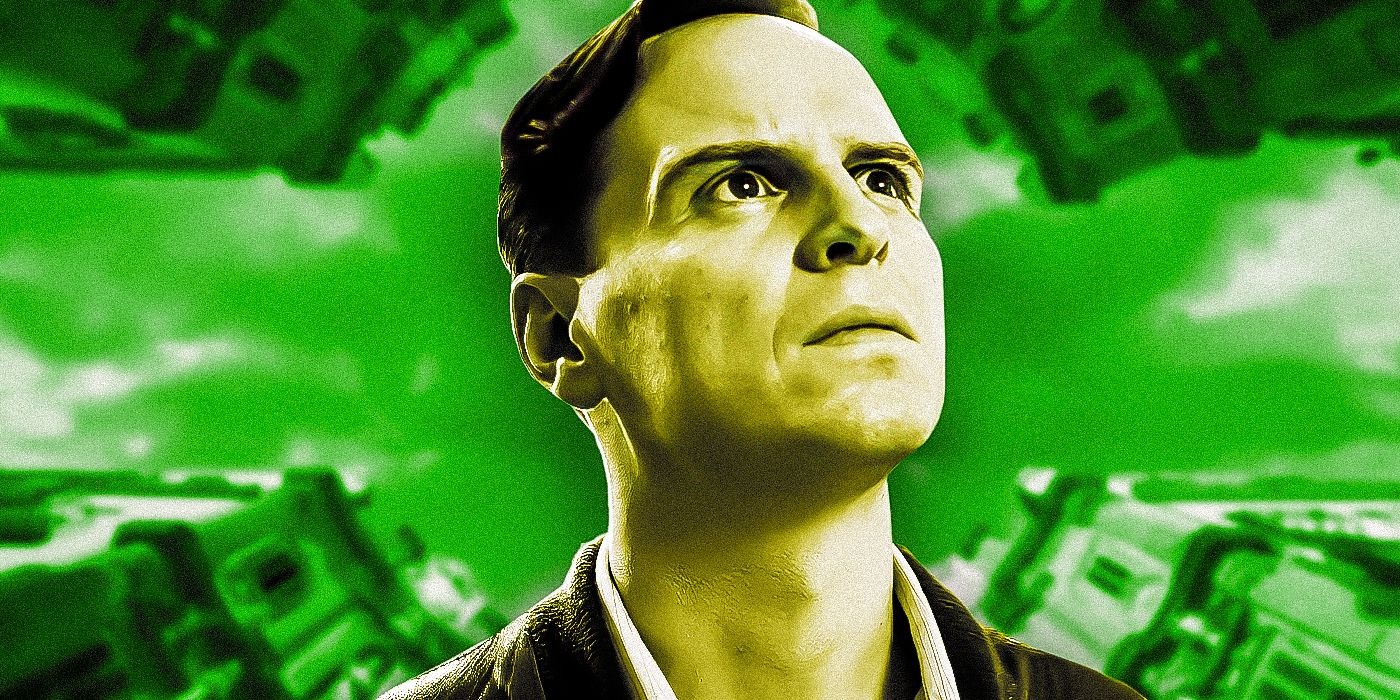The last episode of Ripley on Netflix leaves viewers with plenty to process, particularly regarding the fate of Tom Ripley, the charming yet sinister con artist at the heart of the story. The finale ends on a cliffhanger, and it’s as frustrating as it is thrilling.
This series, based on Patricia Highsmith’s novels, follows Tom Ripley (played by Andrew Scott, known for his role as the Hot Priest™ in Fleabag), a cunning and cold-hearted individual who swindles and murders to stay ahead. The original Ripliad comprises five books, so there’s potential for this series to run much longer.

The first season is based on The Talented Mr. Ripley, in which Tom travels to Italy to deceive a wealthy man named Dickie Greenleaf (Johnny Flynn). Tom’s task is to convince Dickie to return to the U.S., at his father’s request.
However, Tom’s motives take a darker turn as he becomes part of Dickie’s circle, ultimately murdering him and assuming his identity. Instead of merely impersonating Dickie, Tom’s plan escalates. He kills Dickie in San Remo, then fakes his own death and forges documents to maintain his new persona.
Tom even goes as far as to break up with Dickie’s girlfriend Marge (Dakota Fanning) through a letter. When Freddie Miles (Eliot Sumner), a friend of Dickie’s, shows up in Rome, Tom kills him as well. His actions reveal him to be a sociopath, but despite all his crimes, there’s still a part of you that wonders if he’ll get away with it. Does he?
Tom Reinvents Himself in Venice
Before heading to Venice, Tom, still impersonating Dickie, checks out of his hotel, making it clear to the desk clerk that he’s feeling down, which leads the clerk to mention it to the police later on.
The authorities believe Dickie was en route to Tunisia when he disappeared, and they suspect his involvement in the murders of Freddie Miles and Tom Ripley, whom they’ve only heard about. However, they haven’t yet encountered Dickie in person.
When Tom later approaches the police himself, he makes a simple adjustment: he musses up his hair. It’s surprising how effective this small change proves to be. Tom doesn’t even alter his voice, yet it’s enough to throw off the investigation.
He even goes as far as to fabricate a confession from Dickie, claiming that Dickie admitted his love for him before being rejected, which, combined with forged letters, convinces everyone that Dickie was depressed and likely committed suicide on his way to Tunisia.
Is Marge Next on Tom’s List?
Marge, however, doesn’t completely fall for Tom’s act. When she visits him in Venice, Tom seems ready to kill her. He hints at a possible danger by making a grim joke about the slippery steps outside his door and dismissing the staff for the day.
The two of them talk, each trying to assess the other’s knowledge of the truth about Dickie’s disappearance and Freddie’s murder. Later, Tom imagines telling the police that Marge had an accident and fell into the canal.
However, Marge’s discovery of Dickie’s ring in Tom’s belongings leads her to a confrontation. Tom, ready to strike her with an ashtray, hesitates when she suggests that Dickie must have been suicidal, explaining that the ring was a sign of his intent to die.
Tom eventually lowers the ashtray, and soon after, Marge leaves for America, safe and sound. But did Marge believe Dickie’s gesture meant suicide, or did she say that to protect herself from Tom?
What Role Did John Malkovich Play?
John Malkovich’s character, Reeves Minot, enters the story as an essential ally to Tom. In the final moments of the episode, he provides Tom with a new identity and passport, introducing him as Timothy Fanshaw, an art dealer.
This new development leaves room for more to come, suggesting a possible Season 2 that could explore their partnership further.
Did Tom Truly Get Away With It?
The question remains: did Tom manage to escape justice? The answer is somewhat ambiguous. In the final moments of the episode, Inspector Ravini receives a copy of Marge’s newly released book.

Inside, there’s a dedication to Dickie Greenleaf, accompanied by a photo of the real Dickie, which Ravini recognizes as the man Tom killed. This revelation hints that the truth may be closer to the surface than Tom realizes.
The Mysterious Flashbacks to 1606
The finale includes a surprising flashback to 1606, showing the murder of Ranuccio Tommasoni by the Baroque artist Caravaggio in Rome. Caravaggio, notorious for his violent behavior, flees the scene, and a woman asks what he has done this time.
In real life, Caravaggio’s violent reputation and troubled history in court led to many speculations about his motives for the murder. His escape and subsequent death under mysterious circumstances mirror the life of Tom Ripley in many ways.
What’s the Connection Between Caravaggio and Tom Ripley?
The parallels between Caravaggio and Tom Ripley are intriguing, though their full meaning isn’t entirely clear. Both are murderers in Italy, and Caravaggio had a complex relationship with sexuality, engaging with both men and women, as well as being involved in violent conflicts.
In Ripley, Dickie is the painter, not Tom, but as Tom adopts Dickie’s identity, the lines between them begin to blur, creating a fascinating link between the two characters.



